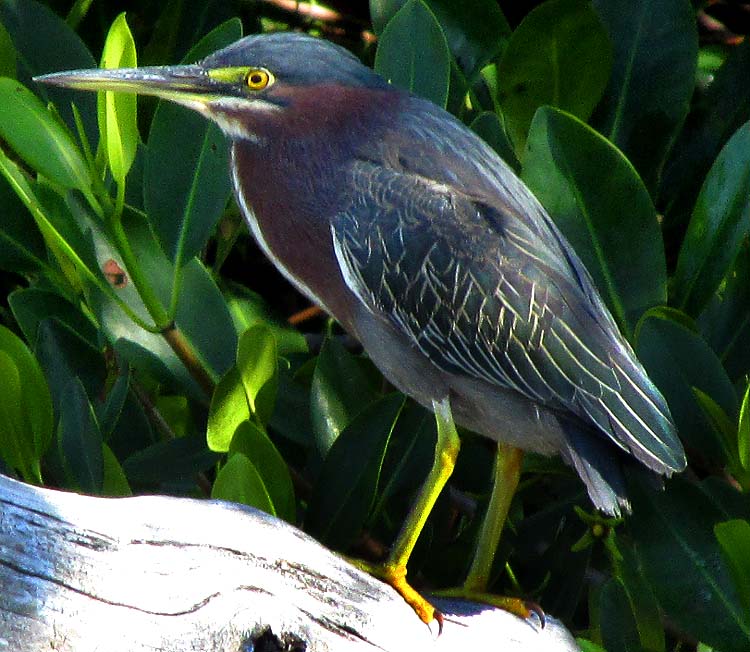Excerpts from Jim Conrad's
Naturalist Newsletter

from the January 25, 2015 Newsletter issued from Río Lagartos, on the Yucatan Peninsula's northern coast (~N21.60°, ~W88.16°), Yucatán state, MÉXICO
GREEN HERON
On our flamingo-viewing boat trips up the estuary we see lot of herons and egrets. The smallest species of that group, and the one with the shortest, thickest neck, is the one shown above. That's the Green Heron, BUTORIDES VIRESCENS, found throughout the US and contiguous Canada, except in the inland western part, and south through all of Mexico to northern South America.
As a kid roaming Kentucky's woodland creeks and swamps, this was the most commonly encountered wading bird. At first I just thought of the Green Heron as a dark, stocky bird who hunches on yellow legs at the water’s edge. However, when I finally got a close view in good light I was struck by the velvet-green sheen that can show on its back, the vivid yellow eye, the rich chestnut chest, and the dark cap that in a flash could be raised into a spiky crest. I've spent hours watching Green Herons crouch like statues, waiting to stab into the water for a fish. I read that sometimes they lure fish using small items such as twigs or insects as bait, but I never saw that.
Except in Florida and the southwestern border, in North America Green Herons are just summer birds, but here in the Yucatan we have them year round.
Other herons and egrets wade in shallow water when they're feeding, but Green Herons typically stand on vegetation or solid ground. Their favorite spots here along the estuary are on snags emerging from the water.